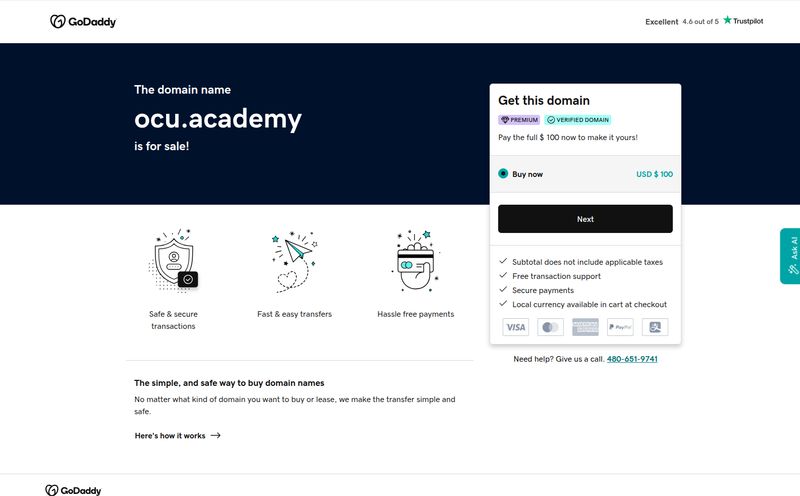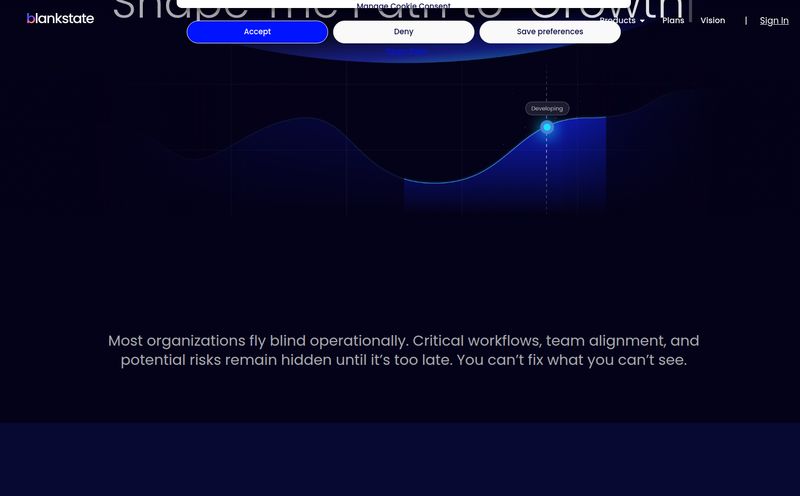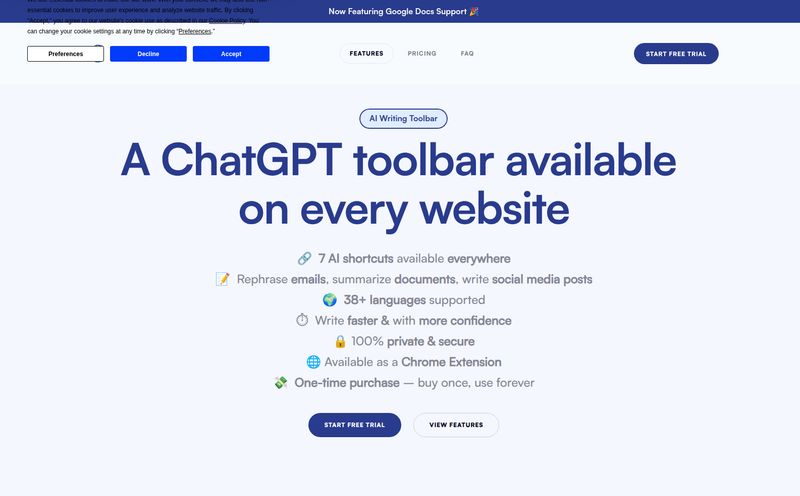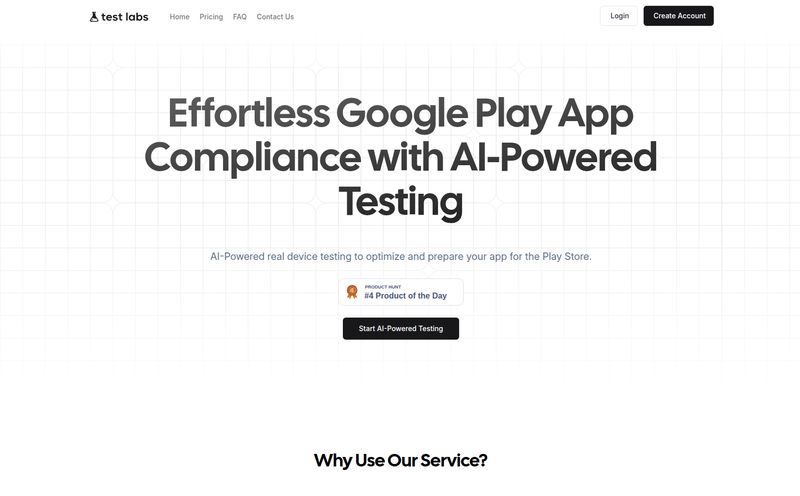How many tabs do you have open right now? Be honest. One for your team chat, one for your project management board, another for your company-wide email, and probably a few for cloud storage. It's a digital circus, and we're all the exhausted ringmasters trying to keep the show on the road. For years, the gospel in tech has been 'best-of-breed'—find the absolute best app for every single task. But I'm starting to think we've gone too far.
The constant tab-switching, the lost-in-translation moments between platforms, the sheer mental overhead of it all... it's draining. It's what I call 'App Fatigue'. And frankly, I'm over it. So when I come across a platform that promises to put everything under one roof, my ears perk up. Enter NHN Dooray!, an all-in-one collaboration tool that's been making some serious waves, particularly in the Asian market, and is now on my radar.
But is it just another jack-of-all-trades, master of none? Or is it the unified, streamlined workspace we've all been dreaming of? I decided to take a proper look.
So, What Exactly is NHN Dooray!?
At its core, NHN Dooray! is a comprehensive collaboration suite. Think of it as taking the core functions of a project manager like Trello, a messenger like Slack, an email client like Gmail, and a knowledge base like Confluence, and then building them all to work together from the ground up. It’s developed by NHN (the parent company behind huge names in Korea), so this isn't some fly-by-night startup. It’s got serious backing.
The whole idea is to stop the information silos. You know the drill: a decision gets made in a chat, but the task on the project board doesn't get updated. An important file is shared via email, but the team working on the project can't find it. Dooray! aims to solve that by making every part of the conversation and workflow accessible from one place. A single source of truth. Sounds nice, right?
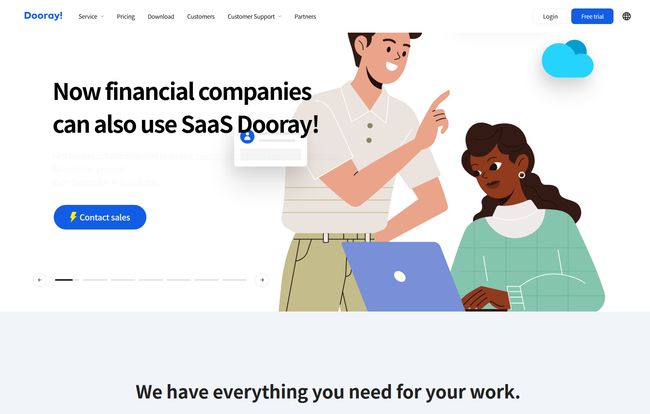
Visit Dooray!
A Look at the Core Features
An 'all-in-one' claim is easy to make. The proof is in the pudding, or in this case, the feature set. Let's break down what's actually in the box.
More Than Just a Project Manager
This is the heart of Dooray! for many teams. It’s a full-fledged project management system. You can create tasks, assign them to team members, set deadlines, and track progress through different stages. It supports different views, so whether your team loves a simple list, a Kanban-style board, or needs to see dependencies in a Gantt chart, it’s got you covered. It feels robust enough to handle complex projects, not just simple to-do lists.
The Integrated Messenger and Mail
This, for me, is the real magic. Having the team messenger and email client built right in is a game-changer. You can turn an email directly into a task or link a chat conversation to a specific project. This is where you really start to feel the benefit of a unified system. No more copy-pasting conversations from Slack into Asana comments. It just... connects. The time saved from this context-switching alone could be huge for a busy team.
The 'Boring' but Critical Stuff: Approvals and Wikis
Let's be honest, nobody gets excited about electronic approvals or documentation. But these are the things that make a business run properly. Dooray! has a built-in e-approval system, which is fantastic for formal processes like leave requests, expense reports, or document sign-offs. And the Wiki feature provides a central place for all your team's knowledge – onboarding guides, project briefs, company policies. Having this integrated means it actually gets used and is always up to date, rather than being a forgotten Google Doc somewhere.
Drive, Calendar, and Everything In-Between
To round things out, you get a shared calendar, a company-wide address book, resource reservation (for meeting rooms or equipment), and cloud storage (Drive). It's not trying to be a complete Google Workspace or Microsoft 365 replacement in terms of raw power, but it provides all the essential tools a team needs to collaborate effectively without leaving the platform. It's less of a Swiss Army knife with a million tiny, confusing tools and more of a complete, professional toolkit for getting work done.
Let's Talk About Security (Because We Have To)
In a world of data breaches, putting all your company's eggs in one digital basket can feel scary. This is a big concern. The Dooray! website makes a point of highlighting its security: “Rest assured, all your information is stored safely after encryption.”
It’s built on the NHN Cloud infrastructure, which is a significant plus. This isn't some app running on a shared server in a garage; it's backed by a major cloud provider. For any manager or business owner who's had sleepless nights worrying about data leaks from a mishmash of unvetted free tools, this integrated and secure approach is a major selling point.
The All-Important Question: The Pricing
Okay, this is where the rubber meets the road. Is it affordable? The pricing is in South Korean Won (₩), so I've done some rough conversions to give you an idea. The pricing structure is actually quite flexible.
One of the first things I noticed was the 50% discount for the first year on annual plans for the Basic and Business tiers. That's a pretty aggressive way to get new teams on board.
| Plan | Best For | Price (per person/month) | Key Features |
|---|---|---|---|
| Free | Small teams or trials | ₩0 (for up to 25 users) | 100GB total storage, basic features |
| Basic | Growing teams | ₩2,500 (~$1.80 USD) | 1TB storage/user, more integrations |
| Business | Established businesses | ₩5,000 (~$3.60 USD) | 2TB storage/user, workflow, security features |
| Enterprise / Package | Large corporations | Contact for quote | All features, premium support, custom setup |
Disclaimer: USD conversions are approximate and will fluctuate. Check the official pricing page for the latest numbers.
The free plan is genuinely useful for a small team of up to 25 people. That's quite generous. The paid plans are very competitively priced, especially when you consider that they replace several other subscriptions. You have to do the math for your own team, but the potential savings are obvious.
My Honest Take: The Good and The Not-So-Good
No tool is perfect. In my experience, the dream of a single platform that does everything perfectly is just that—a dream. But Dooray! gets a lot right.
The Good: The main advantage is the sheer convenience of the all-in-one approach. It genuinely reduces friction. The security aspect, being built on NHN Cloud, is a massive plus for any business that takes data integrity seriously. And that free tier is a fantastic way for smaller teams or startups to get a professional set of tools without the upfront cost.
The Not-So-Good: Like any all-in-one, you might find that a dedicated, standalone tool does one specific thing better. If your team lives and breathes a highly specialized workflow in Jira, for example, the transition might feel like a slight step down in that one area. The UI, while clean, has a distinct feel that might be different from the typical Silicon Valley aesthetic we're used to—not bad, just different. And of course, while the per-user price is low, it can add up for very large teams, though that’s true of any SaaS platform.
Is NHN Dooray! the Right Fit for Your Team?
So, who should give Dooray! a serious look? In my opinion, it's ideal for a few types of organisations:
- Small to Medium-Sized Businesses (SMBs): Especially those currently paying for 3-4 different services to glue their workflow together. The cost savings and efficiency gains could be huge.
- Startups: The free plan is a gift. It lets you establish good collaboration habits from day one without breaking the bank.
- Teams that Value Security: Companies in finance, research, or the public sector (as seen from their client list) that need a secure, auditable, and unified environment will find this very appealing.
Who might want to stick with their current stack? Maybe teams with extremely specialized needs or those so deeply embedded in a different ecosystem (like a company that is 100% Microsoft Teams and Azure) that a migration would be too disruptive. But for everyone else, its worth a look.
Final Thoughts: Tying It All Together
The hunt for the perfect set of work tools is never-ending. We're always looking for that extra edge, that productivity hack. NHN Dooray! makes a compelling case that maybe the best hack isn't another app, but fewer of them. By bringing all the core collaboration components into one cohesive platform, it directly attacks the problem of 'App Fatigue'.
It's a mature, secure, and surprisingly affordable option that deserves more attention outside of its home market. If your team is drowning in tabs and subscriptions, I'd say signing up for the free trial or free plan is a no-brainer. You might just find the unified workspace you've been looking for.
Your Questions Answered
Is there a free trial for Dooray!?
Yes, NHN Dooray! offers a free trial so you can test out its features. Even better, it has a permanent Free plan for teams with 25 or fewer members, which is great for getting started.
Is Dooray! secure for business use?
Absolutely. It's built on the NHN Cloud platform and uses encryption to protect your data. Its impressive list of enterprise and public institution clients suggests a high level of trust in its security infrastructure.
Can I use Dooray! on my phone?
Yes, there is a mobile app available for both iOS and Android, allowing you to stay connected and manage projects on the go.
What happens after the free trial ends?
You can choose to continue using the Free plan if your team fits the criteria (25 users or less), or you can easily upgrade to one of the paid plans (Basic, Business, or Enterprise) to access more features and capacity.
Is the pricing per user or a flat fee?
For the paid plans (Basic, Business, Enterprise), the pricing is calculated on a per-user, per-month basis, which is a standard model for this type of software.
What makes Dooray! different from just using Slack and Trello?
The key difference is the deep integration. While you can connect Slack and Trello, they are still separate products. In Dooray!, turning an email into a task or linking a chat to a project is a native function, creating a much more connected and efficient workflow without the need for third-party zaps or workarounds.
